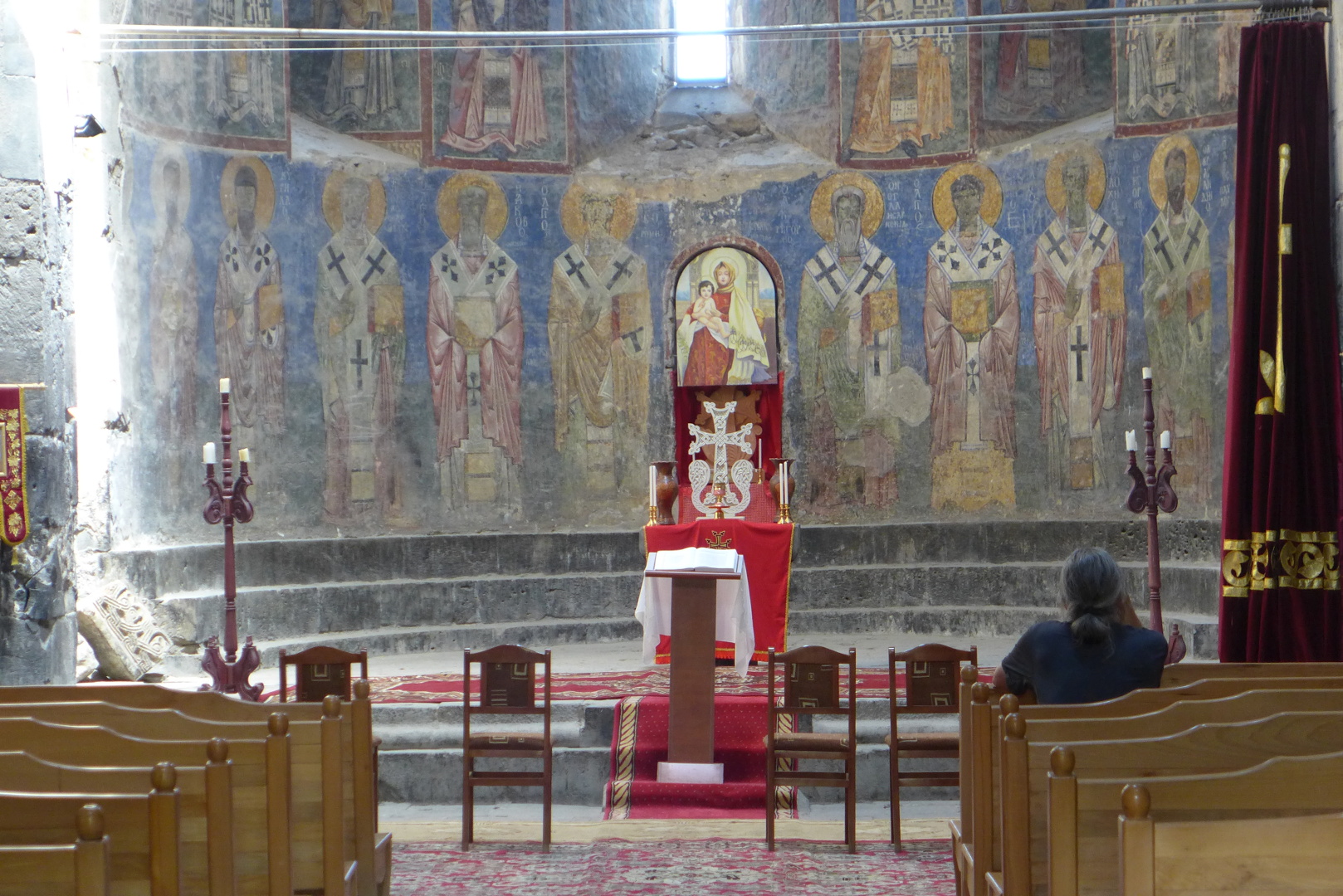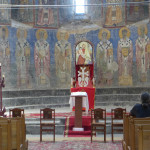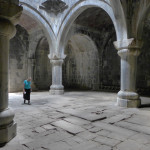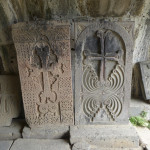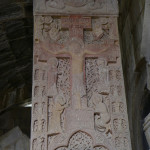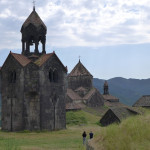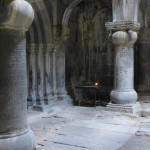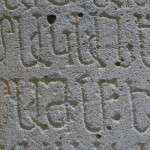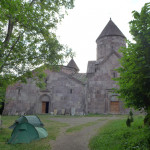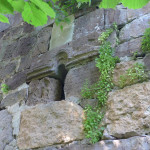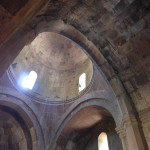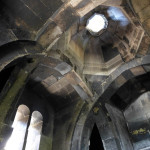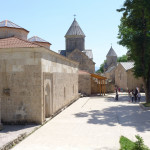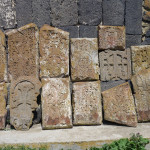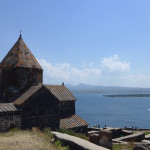Our trip to Armenia was abruptly ended by a car accident, luckily nobody got hurt. Anyway, before the accident which forced us to leave Armenia, we managed to visit seven historically and artistically important monasteries of northern Armenia. July 2017.
We visited the following monasteries, mainly in the canyon of the Debed River in the industrial province of Lori and in the much greener and wilder province of Tavush:
- Akhtala, Lori province, 10th-13th century. A very interesting one, because it is an exception among renowned Armenian monasteries. The main church interior is decorated by frescoes made in Byzantine (Greek) style making it similar to the churches in neighbouring Georgia — by the way, the province of Lori belonged to various Georgian states over long stretches of time. Although somehow restrained in the outside architecture, it is still very impressive monastery and worth visiting. But be reminded — the place is a site of copper mining industry since at least 13th century, with high levels of environmental pollution with heavy metals: arsenic, chromium, lead, and cadmium, even on the very monastery yard. The ravine just nearby the monastery is filled with toxic mining tailings.The situation caused reaction in the form of internationally sponsored cleanup projects. See websites of Pure Earth and Armenia Fund USA for more detailed information. Very characteristic — during the visit we noticed nothing, the only information provided concerned the church renovation itself. For details concerning the monastery and its history, see wikipedia and armeniapedia.
- Haghpat, Lori province, founded 976, 10th-13th century. UNESCO World Heritage Site. Build on slopes overlooking the Debed river valley. The overall impression is — as if someone had secured the ruins so that they do not deteriorate further on and started a few renovation works only to abandon all the work later on. But it is a masterpiece among the classical Armenian monasteries with numerous beautiful khachkars and clearly a nice tourist attraction. For further information, consult wikipedia and armeniapedia.
- Sanahin, Lori province, founded in 10th century. UNESCO World Heritage Site. Situated in the suburbs of once most important copper mine and smelter site in Soviet Armenia, the slowly decaying ugly industrial town of Alaverdi. It means that before and after the visit you are confronted with problems of the post-soviet world as if served on a plate. It is another very polluted place in this country, affected by plumes from the smelter chimneys situated directly in the town and tailings dumping sites nearby. The industrial activities declined due to environmental reasons, however at the cost of massive structural unemployment — with effects seen all over the typical soviet-style town. Recently, a new company re-started the smelter, visibly working, the chimneys smoking… Sanahin is a larger monastery with an atmosphere similar to the one in Haghpat — a secured ruin without larger renovation or conservation works, with a more archeological museum feeling than a living religious site. See wikipedia and armeniapedia.
- Makaravank, Tavush province, 10th-13th century. An abandoned monastery situated high on a ridge on the edge of deep forests far away from any villages, is still a pilgrimage site — with a more or less practical picnic area with a water source. A very atmospheric place, especially compared with the monasteries situated on well-trodden tourist paths. See wikipedia, armeniapedia and also the post about staying overnight at Makaravank on jacek.jankowski.org.
- Goshavank, Tavush province, 12th-13th century. See wikipedia and armeniapedia. A nice classical Armenian monastery, a small one, but with all typical elements on place. It does not function as a place of faith, however, a feeling of an open-air museum, but definitely worth visiting.
- Haghartsin, Tavush province, 10th-13th century, situated in very nice natural surroundings of Dilijan National Park. Recently elaborately renovated via generous and very private sponsorship of the Emir of Sharjah, which is a part of the United Arab Emirates. Therefore, compared to all other monasteries, this one is in the best preservation state, some would say, even over-renovated with walls thoroughly cleaned and a mixture of visitor-park and religious site atmosphere. See wikipedia and armeniapedia (outdated).
- Sevanavank, Gegharkunik province, founded probably 874, but the literature is laconic about its further fate. See wikipedia. Situated on shores of the lake Sevan with a larger beach resort post-Soviet-style below the monastery hill, overwhelmed by Russian-speaking tourists and water scooters roaring on the lake. Since Stalin era, a good address for a summer vacation for aparatchiks. Very nice views all over the lake as a background to the picturesque church domes — to be photographed thousands of times.
A larger photo gallery is in preparation, below a few pictures as “first” impressions.
